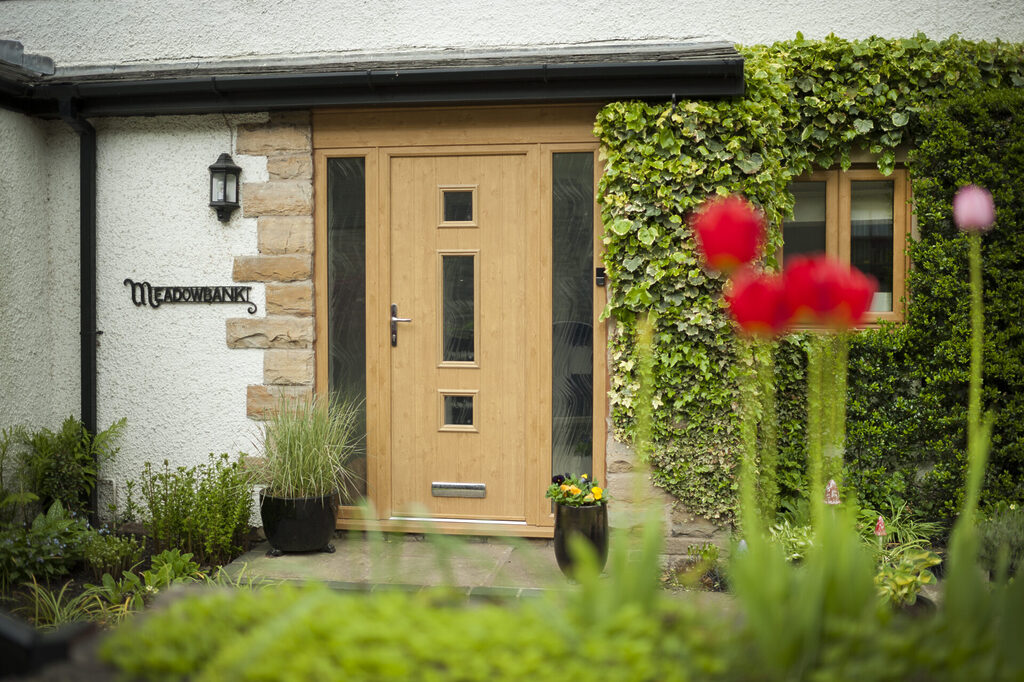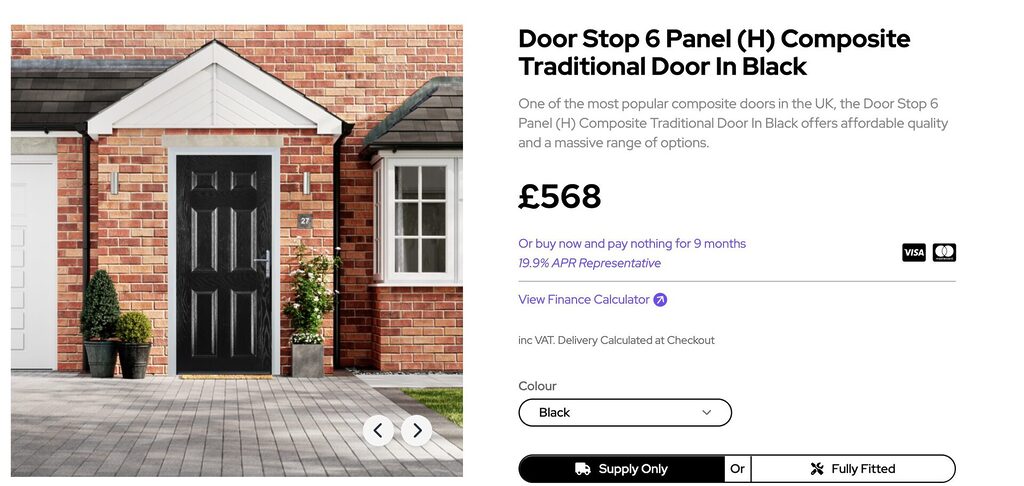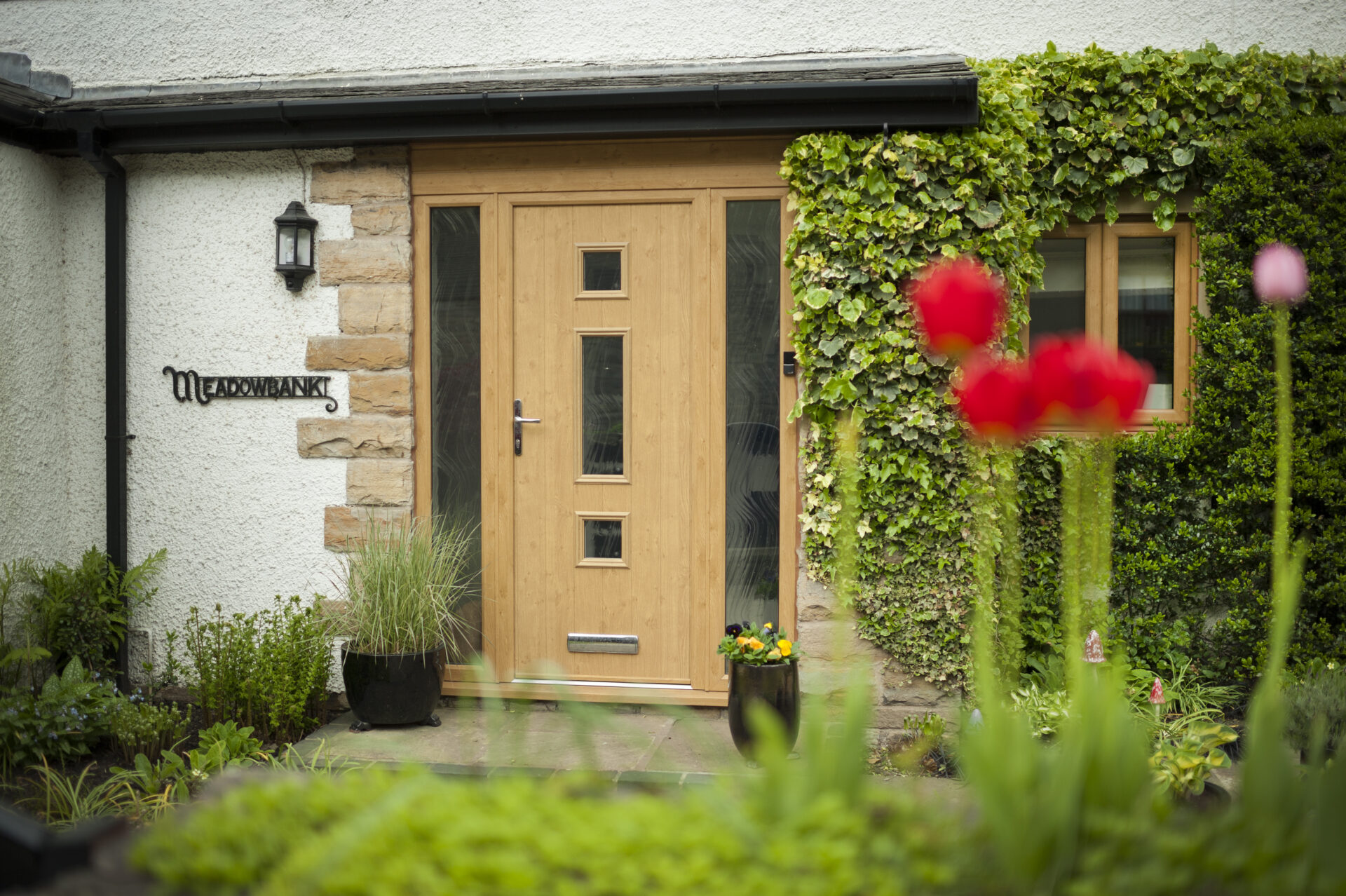Still considering wooden front doors? Discover if a wooden front door is worth it in 2025—compare charm, maintenance, security, and modern alternatives.
What You’ll Learn:
- Why wooden front doors remain popular for character homes
- The drawbacks of a wooden front door vs modern options
- How secure and energy-efficient a timber door really is
- When a wooden front door makes sense—and when it doesn’t
(Estimated Reading Time: 6-7 Minutes)

Introduction
Wooden front doors have been a staple of British homes for centuries—but in a world of aluminium, composite, and steel, are they still a smart choice? Let’s find out.
There’s no denying the charm of a timber front door. The texture, the craftsmanship, the natural aesthetic—it’s a look many homeowners love. But with the rise of newer, low-maintenance materials, many are now asking: Is it still worth investing in a wooden front door in 2025?
At GFD Homes, we know that choosing a new front door isn’t just about appearance—it’s about performance, cost, and lifestyle. So let’s break down the pros and cons to help you decide if wood still makes sense for your home.
The Timeless Appeal of Wood
Why People Still Love It:
- Authentic character and period charm
- Customisable with stains, paints, and ironmongery
- Suits traditional properties, cottages, and listed buildings
Many customers choose wood to match historic aesthetics—or simply because they love the look and feel of real materials.
But… Is It Practical?
Here’s where timber starts to show its age.
| Factor | Timber Front Door | Modern Alternatives |
|---|---|---|
| Maintenance | Needs regular repainting | Low-maintenance (composite/aluminium) |
| Security | Moderate (upgradeable) | High (PAS24 + SBD certified) |
| Thermal Efficiency | Lower (unless upgraded) | Higher (U-values < 1.2 W/m²K) |
| Weather Resistance | Can warp or swell | Fully weather-sealed |
| Price | £1,200–£2,500+ | From £568 (composite) |
“We loved our old wooden door… until it started sticking every winter. We switched to a composite design with a timber effect finish—and haven’t looked back.” — GFD Customer, Sheffield
Is a Wooden Door Still Secure?
Timber can be very strong—but it depends on:
- The quality of the wood (engineered vs softwood)
- Locking systems installed
- Door thickness and fitting quality
We recommend upgrading with:
- 5-lever mortice locks
- BS3621 certified deadlocks
- Security chains and hinge bolts
However, for hassle-free security, composite or aluminium doors come PAS 24 certified as standard.
Fire Safety & Energy Efficiency
While timber doors are naturally fire-resistant, they often fall short on thermal insulation unless built to modern standards with insulating cores.
By comparison:
- Composite doors use PU foam cores
- Aluminium doors include thermal breaks and foam infills
These doors keep your home warmer in winter and cooler in summer—without compromise.
👉 Explore Composite Front Doors
👉 Explore Aluminium Front Doors
Can You Get the Timber Look Without the Timber Hassle?
Yes! That’s where wood-effect composites shine. You can now get:
- Oak, walnut, or rosewood grain finishes
- Hand-finished textures
- Low-maintenance coatings that never need repainting
“Our new ‘wooden’ door is actually a composite—but you wouldn’t know it unless you touched it. It looks incredible and never warps.”
Cost Considerations
A high-quality engineered timber door can cost anywhere from:
- £1,200 to £3,000+, depending on glazing and customisation
Add in the long-term costs of paint, varnish, and potential repairs—and the value equation starts to shift.
Modern alternatives:
- Composite front doors: from £568
- Aluminium front doors: from £1,400
- Glass or side panels can be added for more light and impact

Best Use Cases for Timber
Wooden front doors can still be a great choice if:
- You’re in a listed or conservation property
- You’re restoring a period home
- You want full control over a handmade, bespoke design
But for most everyday homeowners, composite and aluminium options offer better performance, less hassle, and more longevity.
Conclusion
There’s no denying the charm of wooden front doors. For period homes, listed buildings, or those who value craftsmanship above all else, a wooden front door can still be the right choice—especially when finished to a high standard.
But in 2025, homeowners have more options than ever. Composite and aluminium doors now offer the classic timber look, without the maintenance worries, energy loss, or security trade-offs. They’re also often more cost-effective in the long run.
So, is a wooden front door still worth it? For some heritage homes—yes. But for most modern properties, the smart move may be a wood-effect composite or aluminium door that keeps the look and upgrades the performance.
Let us help you choose a front door that fits your style, your home—and your lifestyle. Aswell as offering a whole range of home improvement products.
🛒 Browse the full collection at www.gfdhomes.co.uk.
📞 Or call 01642 309576 for expert guidance and a no-pressure quote.
In a rush? Why not contact us via Whatsapp
Browse our articles for tips, comparisons, and expert advice on why composite doors are a smarter, more stylish alternative to timber
- Contemporary Entrance Doors: Why Composite and Aluminium Are Top Choices
- Front Door Replacement: Your #1 Guide to Getting It Right
- Composite Front Doors: The Ultimate Guide
- Trade Composite Doors: looking for trade prices? Visit our trade site, The Trade Village
FAQs About Wooden Front Doors
Q: Do wooden doors warp?
Yes—especially if exposed to constant wet-dry cycles. Engineered timber resists this better, but it’s still more prone than composite or aluminium.
Q: How often do I need to repaint a wooden door?
Typically every 2–4 years depending on exposure and product used.
Q: Can I get a wood-effect aluminium door?
Yes! GFD offers powder-coated aluminium doors with woodgrain textures and colours.
Q: Is wood more environmentally friendly?
Not always. Sustainably sourced wood is good—but modern doors are often recyclable and far more energy-efficient.

